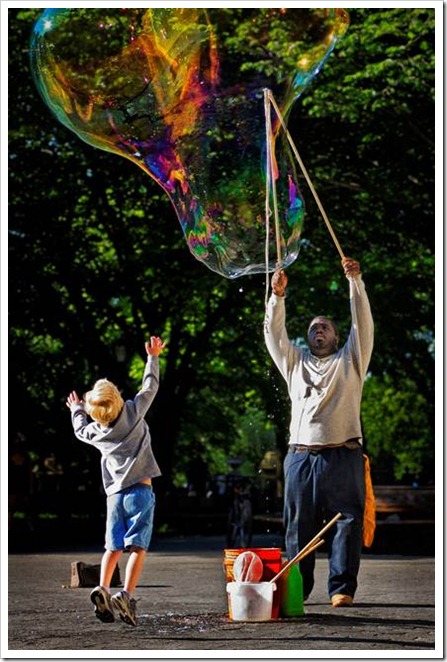On July 15, 2011 it was my honor to give a presentation at the Patient Information Day of the Second Annual CCSVI Update Symposium, held at the Crowne Plaza Hotel in Times Sq., New York City. The organizer of the symposium, Dr. Salvatore Sclafani, asked me to write an essay for oral presentation on "A Patient's Perspective on CCSVI", using some of the photographs I've taken from my wheelchair mounted camera to illustrate my talk. I've posted the resulting essay here in four parts, spaced a few days apart. Here's the finale, part four (click here for part one, part two, or part three):
This is one of my favorite photos that I've taken from my wheelchair. It was taken in Central Park, in an especially beautiful section called The Conservatory Gardens. The gardens are truly spectacular, and I'd urge anyone who has the chance to visit them to do so, especially in spring or autumn, when they are bursting with color.
For me, this photo embodies two key elements, freedom and patience. While the element of freedom may be easy to discern, the patience involved in taking the photo is probably harder to detect. When I first discovered this fountain, adorned with sculpted sparrows, I also saw real-life sparrows utilizing it as a birdbath, just as the artist intended. I found the juxtaposition of the inanimate and live birds striking, and hoped to capture a moment that would illustrate the coming together of nature and such a graceful example of the power of the human imagination. In order to capture the fleeting moment caught in this frame, I sat in one spot for about an hour and a half, taking literally hundreds of photos, systematically shooting pictures in rapid-fire mode every time a bird took off or landed. Luckily for me, one of those hundreds of photos turned out to be this one. Patience does have its rewards.
When it comes to the pace of CCSVI research and treatment, I completely understand how difficult it can be to be patient. Those of us suffering from chronic, progressively disabling disease know all too well that the clock is ticking. Any youthful notions of immortality or indestructibility were demolished the moment we were shown MRI images depicting holes in our brains and spinal cords. Stripped of such illusions, a certain desperation can set in, and the desire to do something, anything, to stave off a calamitous future takes hold. This desire can manifest in many forms, from outright panic to steely determination, but every self-empowered MS patient has their radar set to scan the horizon for any new development that might save them from a dreadful end.
CCSVI certainly holds the promise of potential salvation. This radical new approach to looking at MS, offering fundamentally new ideas about how to treat the disease, gives the afflicted a life ring to grab onto, a ring plainly inscribed with the word Hope. But we are yet in the early stages of our understanding of CCSVI and how best to treat it. The treatment procedure I underwent a little bit over a year ago is far different than the procedures being done today, and procedures being done a year from now will likely be more different still. Therefore, while no one could argue with any patient choosing to pursue treatment now, for some the decision to be patient and wait cannot be viewed as a terrible choice. Sometimes, the race does go to the swift, but there are times too that discretion is the better part of valor.
As for the other element prominent in this photo, freedom, well, that is what I wish for every MS patient, everywhere. Freedom from the fear that we wear as a second skin, freedom from the cognitive deficits that threaten to steal our very essence, freedom from the braces, canes, scooters, and wheelchairs that that we use to compensate for our damaged bodies, freedom from the grip of a medical establishment that all too often seems more designed to seek profits than cures. Let us all someday soon alight like birds from a fountain, our sweetest dreams come true, and our fondest desires realized.










